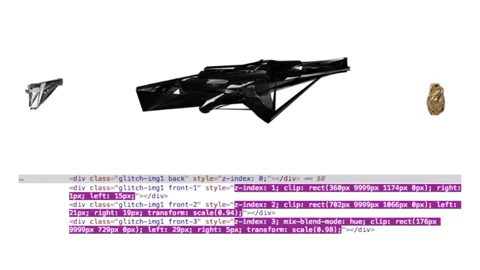
The Artwork
Glitch?
Error and noises elevating to an artform
Unexpected
A glitch is an „error“ in a system. Audiofiles with a broken tune, videos with corrupted images or sounds, colorful pixels which disguise and manifest in the image. In our digital life we encounter such errors on a daily basis. Algorithms confuse themselves. Computers seem to have grabbed a hold on their own life. Almost like the spirit of the machine, emerging from the depths just to say „hello“ in their own form on the surface.
„Glitch art“ is consciously looking for errors and malfunctions. It celebrates the aesthetics of the error. Glitch art has enjoyed a lot more attention today but the origin of the idea is seen before the stet of the digital world. (From Dada, about futurism reaching video art - glitch artifacts are found in many genres.)
Errors are achieved by techniques like databending (programs being misused), datamoshing (data compression manipulation in video), sonification (manipulation of sound effects on images), circuit bending (Hardwaremanipulation), and much more. The output expresses the unanticipated result of the inner life of the machine.Complex processes and calculations which are invisible to us normally become visual. Every technique on its own is presented with specific glitch characteristics.
The work of the glitch artist is only a part of the process. Their technique and the file where it should appear is the impulse for the machine to start messing up and displaying the result. The output is not predictable for the artist. He has no influence on the image or the sound.
The machine is not tending towards a specific style, does not work for somebody and has no prior knowledge of any arthistorical conventions related. In fact the machine is not even aware that the program which just collapsed is a considered piece of art. The glitch is free, unbound and a random product comprised of calculations and errors, with his own aesthetics, not influenced by rules or norms.
Glitches are experienced spontaneously. The surprise and unpredictability triggers the impression that they were conceived by an unknown force. Through glitches, real, “right” structures seem enhanced. The supposed error is in focus of the reception. The destroyed images, sounds and objects are a metaphor for vulnerable systems, a world which through one tiny irregularity loses its structure, causing it to collapse.

The Artwork
Especially in this shifting time, the topic of “useless weapons” is so popular and eyecatching, that it resonates a symbolic idea. The works could be easily scaled to any size making it undependable upon media type. As a sculpture, as jewellery, a canvas or an animated GIF. Flexible in size and material.
Due to the weapon being in a semiotic context it is a strong, simple, archaic icon, with a clear statement. The idea in “Useless Weapons” explains itself and therefore spans along a broad spectrum of viewers.
The 3D files were scripted with additional scripts of musical plays or poetry and “glitched” on multiple programs. Through this data-mix, new 3D models were rendered.
These models were not only altered but also made compatible for printing so that a 3D printer wasn’t going to decode it as an error. The series of printable models has 3 pieces so far. All were already printed in varying sizes and materials.
// Art Concept
„Useless Weapons" Video v1
Useless Weapons
Alexandra Ehrlich-Speiser
Videography & Web Concept
Hectór González
Audio
Helmut Stekl

Illegal 3D datasets are available in the dark web. Just 3D-print your favorite weapon!
An alarming fact:
the ubiquity of destructive murder weapons will increase rapidly
Based on that the concept is
to take over these data,
to glitch,
to error,
to noise them and
make them useless.